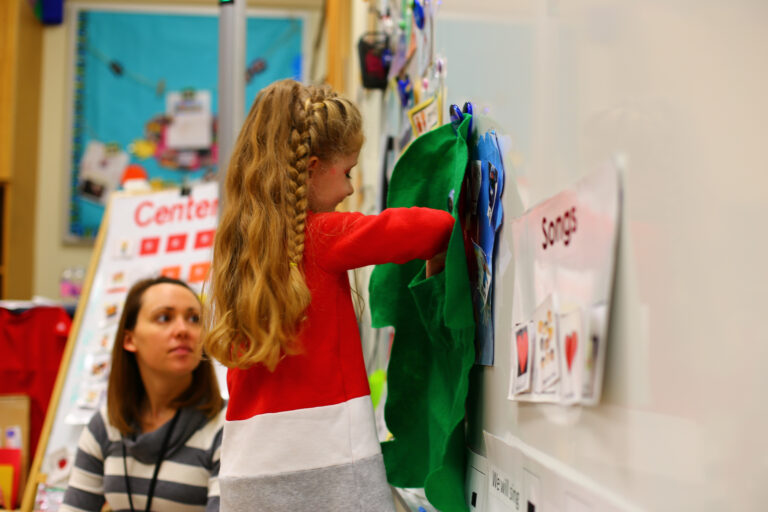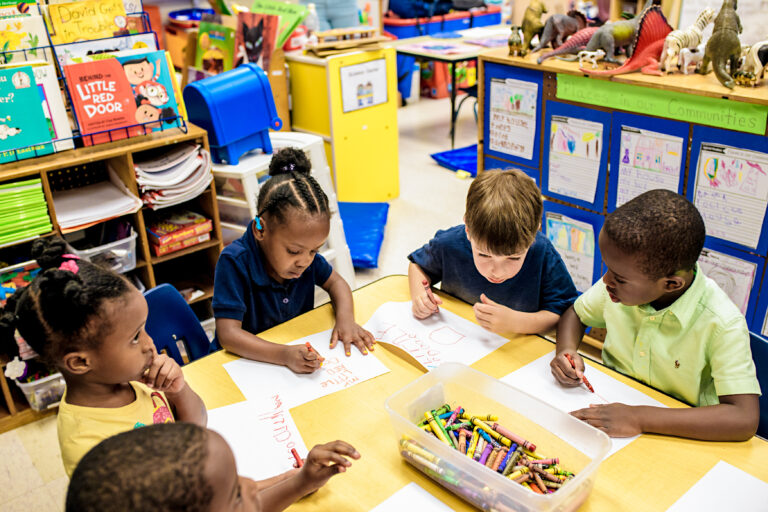Matthew and Tilly START Read 1
This week’s book is Matthew and Tilly. This first read focuses on explaining the key events of the story and pushing in target vocabulary.
Matthew and Tilly START Read 2
This second read focuses on the character’s thoughts and feelings about the key events of the story and continues to push in target vocabulary.
Tying it Together
Throughout the week, engage in meaningful conversations around these words. Soon, you will notice them becoming a part of your students’ vocabulary!
Target Vocabulary |
Conversation Starters |
| Argument- A disagreement, a quarrel | Remember how Matthew and Tilly were best friends but one day they got into an argument, a disagreement and Matthew stomped up the stairs? Why did he do this? How did he feel? |
| Customer- someone who buys things | Remember how Matthew set up his cash register and cans to play store but he didn’t have any customers, people who buy things. Why didn’t Matthew enjoy playing store, even though it was the best one he had ever made? |
| Apologize- To say you are sorry | Remember how Matthew and Tilly had an argument and were playing alone? Why do you think they decided to apologize, say they were sorry and make up? |
Progress Monitoring
After hearing the first two reads, let your students tell the story of Matthew and Tilly and show what they’ve learned! Say to your students, “This week we heard a story about Matthew and Tilly and how they were best friends. Remember how one day they got into an argument and stopped playing together. Now that you know it so well, you get to tell the story.”
Ask them open-ended questions about what happened and how the character felt. This is your opportunity to have a conversation about the story. Prompt your students with open-ended questions to discuss the story. Be intentional in the questions you ask to try and pull-out target vocabulary and rich, complex language. Always acknowledge their answer and expand on it by using complex sentences with tier 2 vocabulary.
Use our START Ladder Safety Nets resource to help you tune in to your students during story reads to see where they are on our START ladder. This will support you in providing the appropriate safety nets to support your students’ language development.
Path Pointer
Building a Virtual Classroom Community: Prioritizing Love and Fun
We will continue our series of videos to help support your virtual classroom! Watch Sarah share the importance of building relationships with your students.
Phonological Awareness: Rhyming
Rhyming activities are not only fun and engaging for young children but they also call attention to the similarities and differences in the sounds of words.
Singing songs, saying nursery rhymes and finger plays expose children to rhythm and rhyme and should be used throughout the year. Transition activities and music and movement activities are perfect opportunities to engage children in rhyming. Even when you are addressing other phonological awareness activities, rhyming activities can be included during different parts of each day.
Alphabet Knowledge: Letter Recognition
Use our Alphabet Knowledge Blog to support your students in learning this week’s focus letters.
Focus Letters this week: B, C and H




Thank you for showing how to read a book appropriately for a pre-k class , I love it .
Thanks for sharing ❣️Awesome.